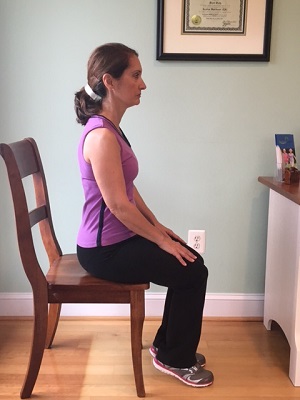Exercise is without a doubt the most important thing you can do to build bone strength. Although it is true that we naturally lose bone mass as we age, it has also been very well established that exercise can maintain and even improve bone mass at any age. Around age 40, women start to lose bone mass at a rate of 0.3-0.5% a year. After age 50, the rate of bone loss increases to 1-1.5% a year and can accelerate to over 2% a year during the first 6-10 years after menopause. The good news is that consistent exercise has been shown to improve bone mass by 1-3% a year!
In the last newsletter, I talked about how stress can be detrimental to our bones, but exercise can stress our skeletal system in a positive way! The greater the stress an exercise places on a bone, the more it stimulates bone turnover and strength. So the best bone builders are exercises that put a force on the bone, like weight-bearing activities such as power walking and jogging and resistance or strength training exercises. However, research suggests that resistance training actually has a more profound site specific effect on bone. For instance, performing squat exercises not only improves leg strength, but also increases bone mass in the hip and lumbar spine. Just as muscle gets bigger and stronger with resistance training exercise, so does bone.
Resistance training, is beneficial in so many ways. Not only does the force of the muscle contracting on the bone stimulate bone growth, but muscle, in response to exercise, also releases a hormone called irisin. Studies have shown that irisn produced by muscle during physical exercise can increase bone mass and strength. Irisin has been shown to increase the number of osteoblasts (bone building cells) while inhibiting the production of osteoclasts (cells that break down bone.) Strength training also effectively offsets age-related decline in muscle mass. Body muscle mass decreases by approximately 15% between the ages of 30 and 80 with a 30% decrease in overall strength between the ages of 50 and 70. Improving overall muscle strength is essential to improving balance, which in turn, decreases the likelihood of falling and breaking a bone.
For the most beneficial effects of resistance training, women should start strength training before menopause, however, you can experience the benefits at any age. Strength training exercises can include lifting weights, using elastic exercise bands or weight machines, or simply lifting your own body weight. Performing resistance training at least twice a week has been shown to build bone and muscle mass.
As stated above, squats are a great exercise to start building bone in the hips and lumbar spine. Below is a progression of the squat exercise from basic to advanced. If you have not been doing resistance training or arthritis in your knees, hips or back, you should start with the chair squat and progress as able. As with any exercise program, go at your own pace, stop if you have pain and progress to the next level only when you feel like the current exercise level is getting to easy.
Squats
1. Chair Squats: This is a great exercise to get you started. Simply start by sitting up tall in a chair and then standing up tall without using your arms. Focus on using your leg muscles to stand up rather than thrusting your body forward. Perform 2 sets of 5-10 sit to stand chair squats a day.


2. Mini Squats: You can start this exercise on a stool or higher chair and then progress to a lower chair once you become stronger. Start by standing up tall with feet shoulder width apart. Slowly lower yourself down, like you are going to sit on the stool or chair. Touch your buttock lightly to the chair, without fully sitting, then straighten back up. Start by performing 2 sets of 10 mini squats daily.




3. Full squats: Perform initially without weight and then progress to using weights as you become stronger. Start with feet shoulder width apart and focus on bending at the hips. Don’t let your knees pass your toes as you squat. When using a weight, keep it a chest level and be sure to tighten your stomach muscles and keep your back straight as you squat. This will protect your back from excessive loads. Start by performing 2 sets of 10 squats without weights. When this becomes easy, you can add light hand weight and progress as able.


Weakening of the bones does not have to be a part of normal aging. You can do something about it! Start performing resistance exercises today and you can stimulate increases in bone mass that can offset the negative effects of aging and help you to age vibrantly!
Contact Susan for further advise on how to start building your bones TODAY!
703-738-4230






